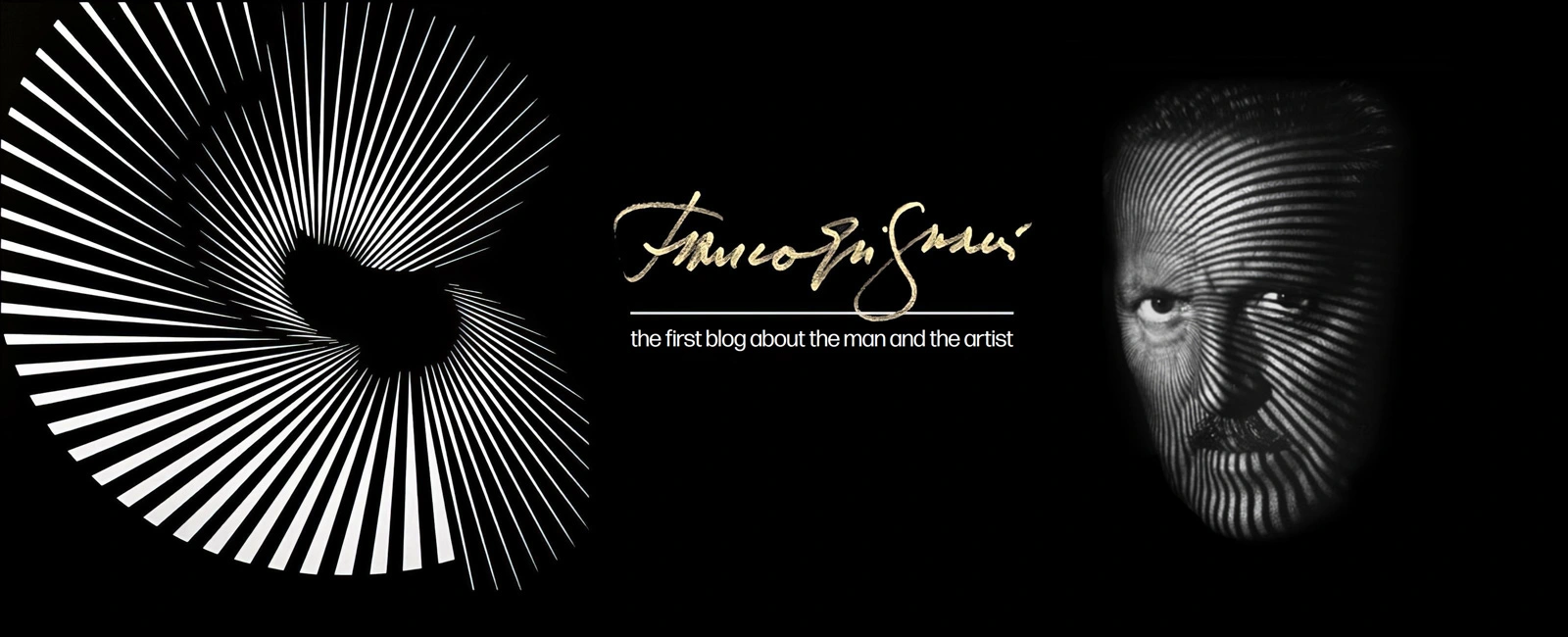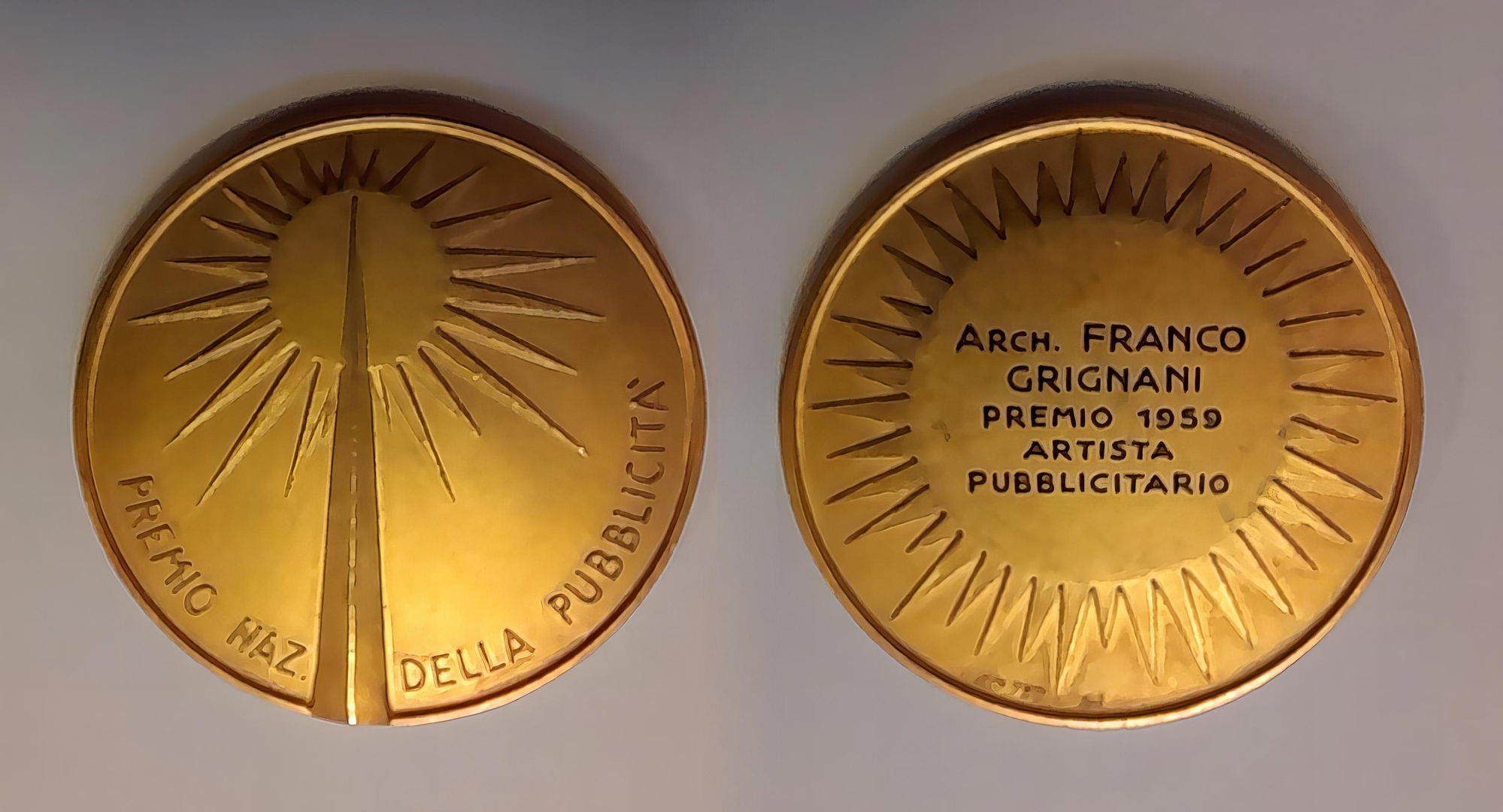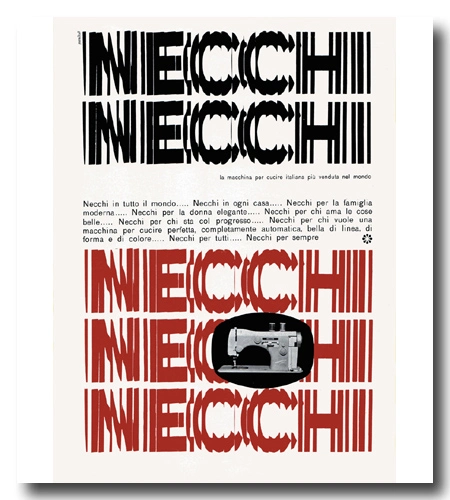

“Italy’s few commercial artists are self-instructed. The absence of a strong tradition and the lack of specialised schools explain the need for foreign contacts, already severely tested by the long years of isolation, when the production of the free nations was out of reach.”
[Antonio Boggeri, ‘Advertising Art in Post-War Italy’, Graphis issue n° 18, 1947]
“Incredible as it may seem, there are in Italy no professional schools for advertising. […] Yet only thirty years ago there were precious few Italian firms which realized that advertising, to be a success, must be carefully planned and carried through on a large scale. […] After the war […] advertising became one of the pillars of reconstruction. […] Today the commercial artist […] usually works as a free-lance and mostly gives his productions a note of his own. […] For this reason I regard the commercial artist as having his own special importance: because his idea, his artistic interpretation of the commercial concept, helps to bring about the success of a product.”
[Carlo Dinelli, ‘Commercial Art in Italy’, in Graphis issue n° 33, 1950]
Against this backdrop, the Palma d’Oro was established in 1950 and awarded by a jury mainly composed of representatives from the advertising profession. In its initial years, the prize consistently honoured companies like Olivetti, Barilla, and Pirelli, recognizing their graphic designers’ innovative solutions and refined aesthetic sensibilities.
The 1955 edition of the prize was skipped due to a profound disagreement within the professional advertising community. The dispute revolved around the perceived overemphasis on “graphic forms and artistic values”, considered detached from “advertising commercial goals” and lacking consideration for the psychology, tastes, class, cultural backgrounds, and social context of the target audiences.
In response to the controversies, the rules of the Palma d’Oro were revised in 1956, shifting the focus to the campaigns’ “effectiveness in terms of sales and notoriety obtained by the product or service advertised”.
In 1959, during the second National Advertising Week, the jury of the 9th National Advertising Award (‘9° Premio Nazionale della Pubblicità‘) unanimously bestowed the Palma d’Oro upon Necchi, a pioneering factory in Pavia renowned for ‘good design’ in sewing machines (the Mirella model, particularly inspiring, earned the distinction of being one of the few sewing machines permanently displayed at the MoMA in New York). Originally a significant foundry in Europe, Necchi ventured into sewing machine production in 1919. Having secured the Compasso d’Oro twice (the oldest and most prestigious global award for industrial design) in 1954 and 1957, Necchi achieved a remarkable feat in 1960, producing a sewing machine every 24 seconds, supported by a network of 10,000 Necchi stores worldwide.
In an interview with Rai (Italian radio and television), Vittorio Necchi declared:
«In the motivation of the jury of the National Advertising Award for the Palma d’Oro, there is a sentence that more than any other is a source of profound satisfaction for me: “Necchi advertising is constantly inspired by the criterion of constituting a loyal and useful guide for the consumer“. I have always wanted our actions to be inspired by this criterion. We have never abandoned this style and this measure, convinced that reality, even in information, is the moral basis of the relationship between those who produce and those who consume. So I think any commercial competition should be conducted.»
In 1959, advertising experts duly commended Franco Grignani’s graphic work with the ‘Award to the Advertising Artist’ (gold medal), noting that it had “never degenerated into abstractionisms that were inessential to the purpose of the advertisement or not perfectly accessible to its public of potential buyers”.
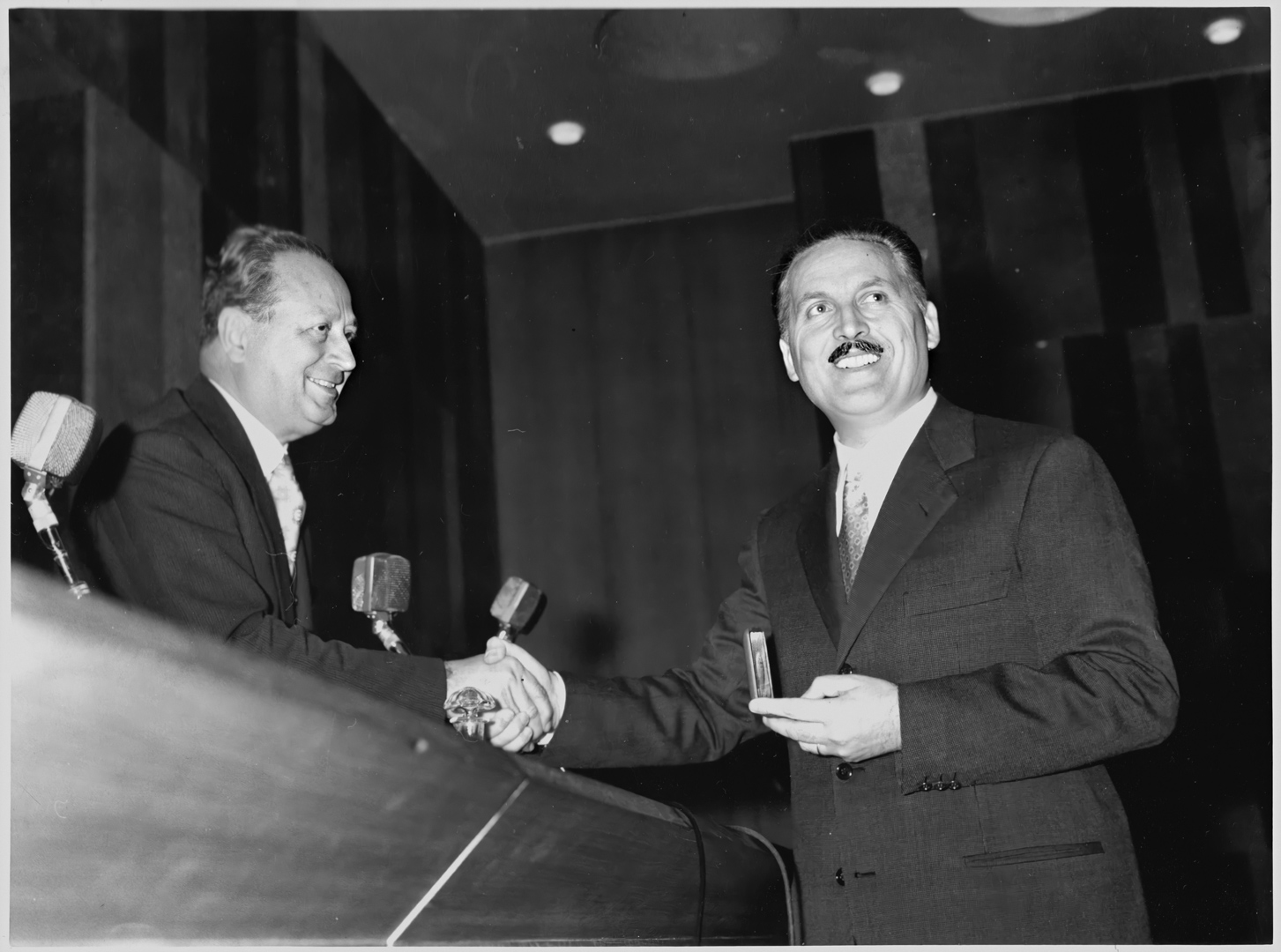
While discussing Grignani’s graphics, emphasis was placed on the manner in which the “form of the machine” was never isolated but consistently accompanied by the “human form” of a woman (in this context, the notable artistic collaboration between Franco and his wife Jeanne was well known, especially for successful advertising campaigns such as the one for Necchi).
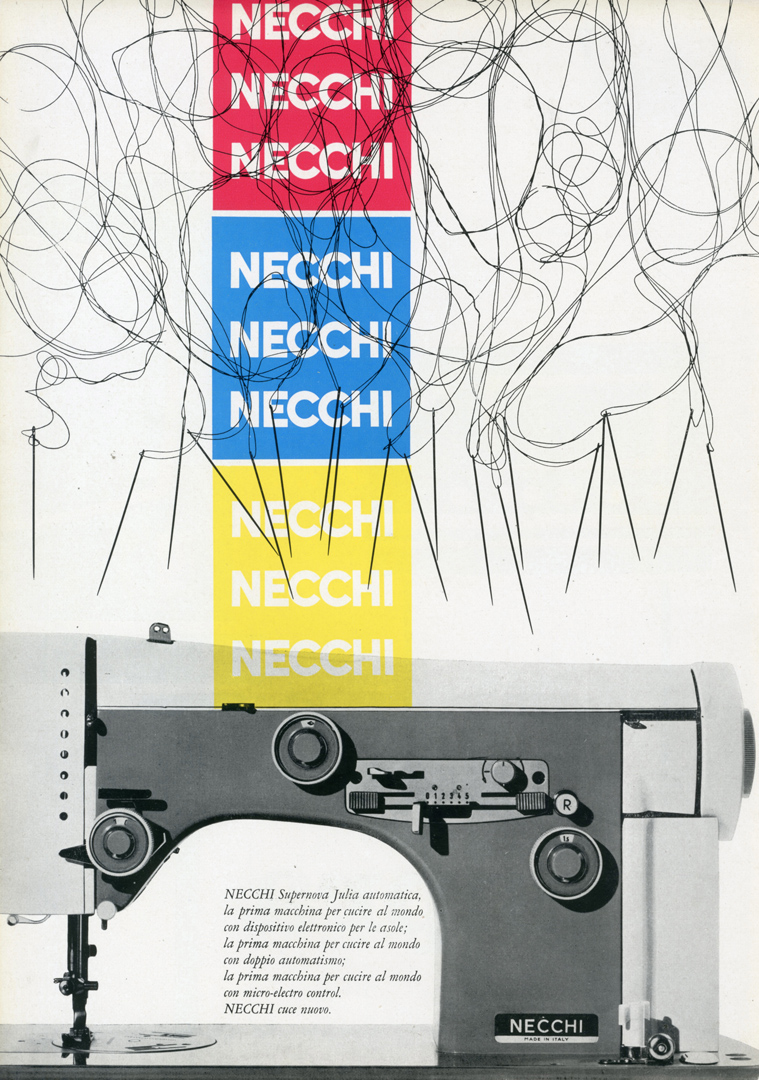
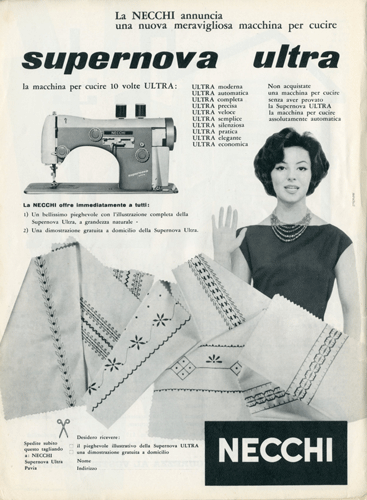
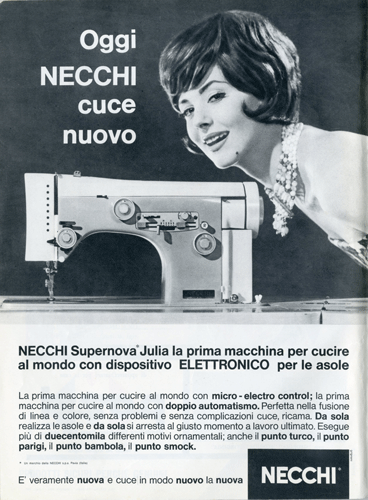
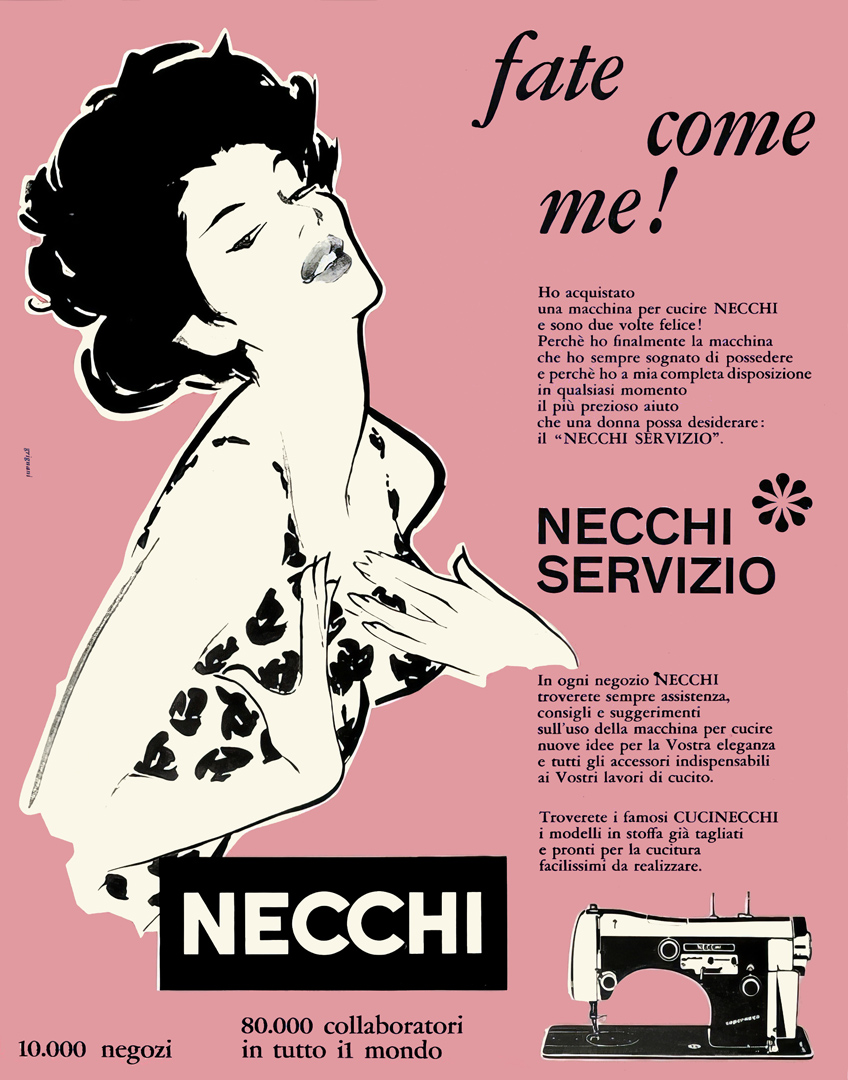
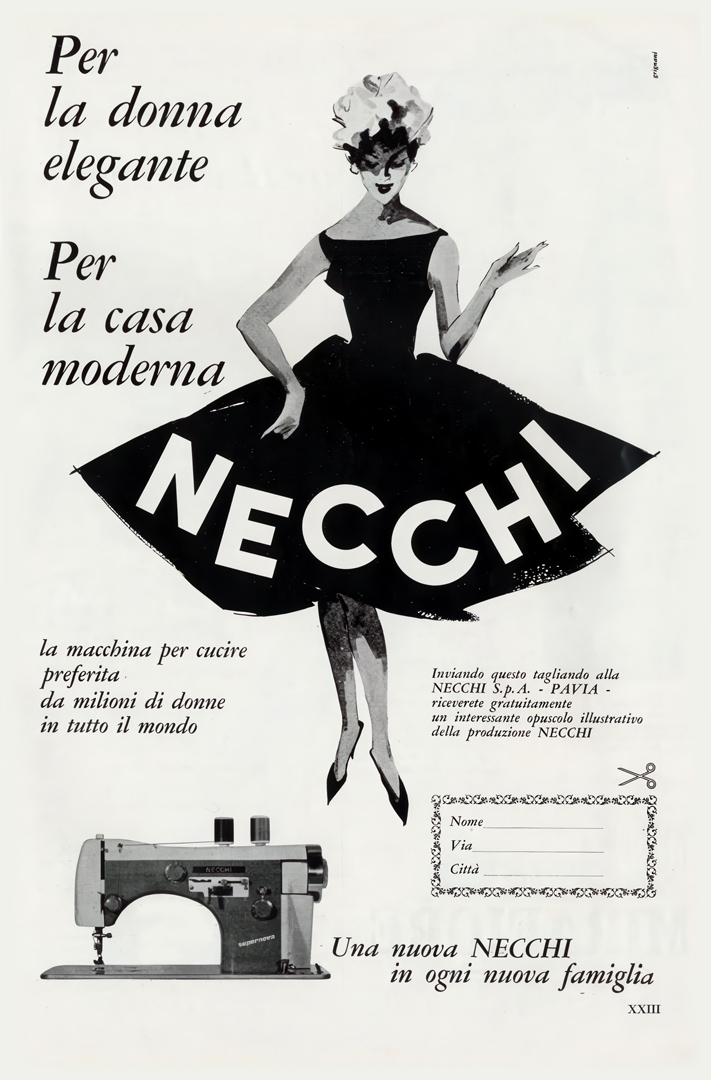

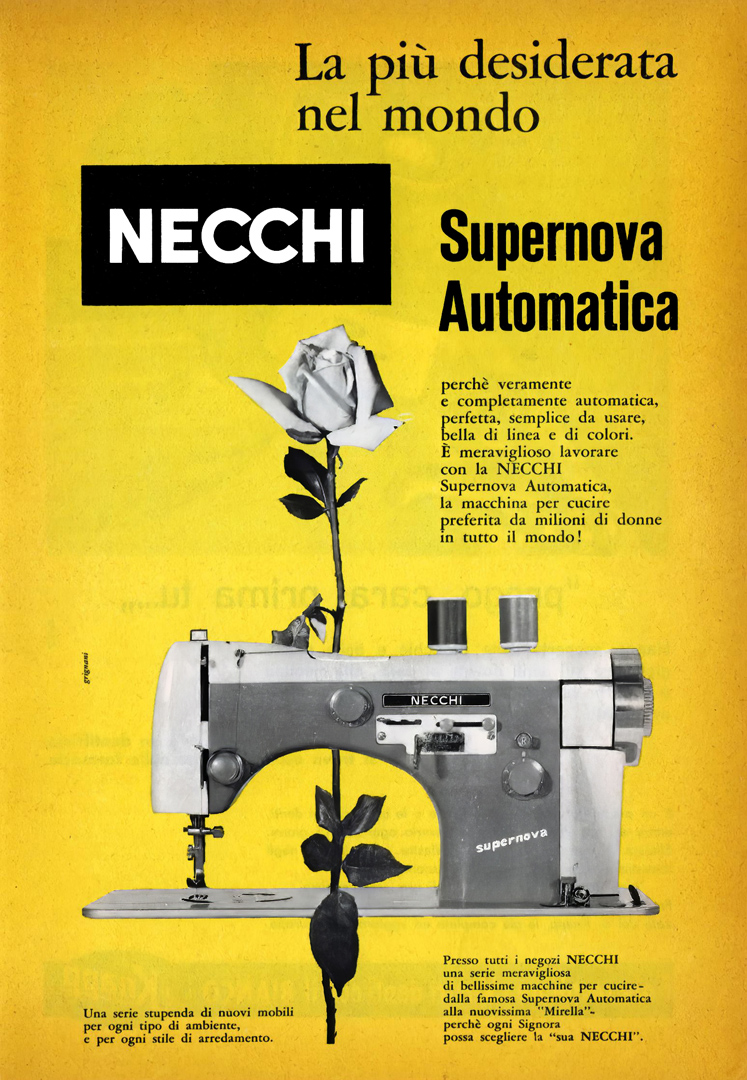
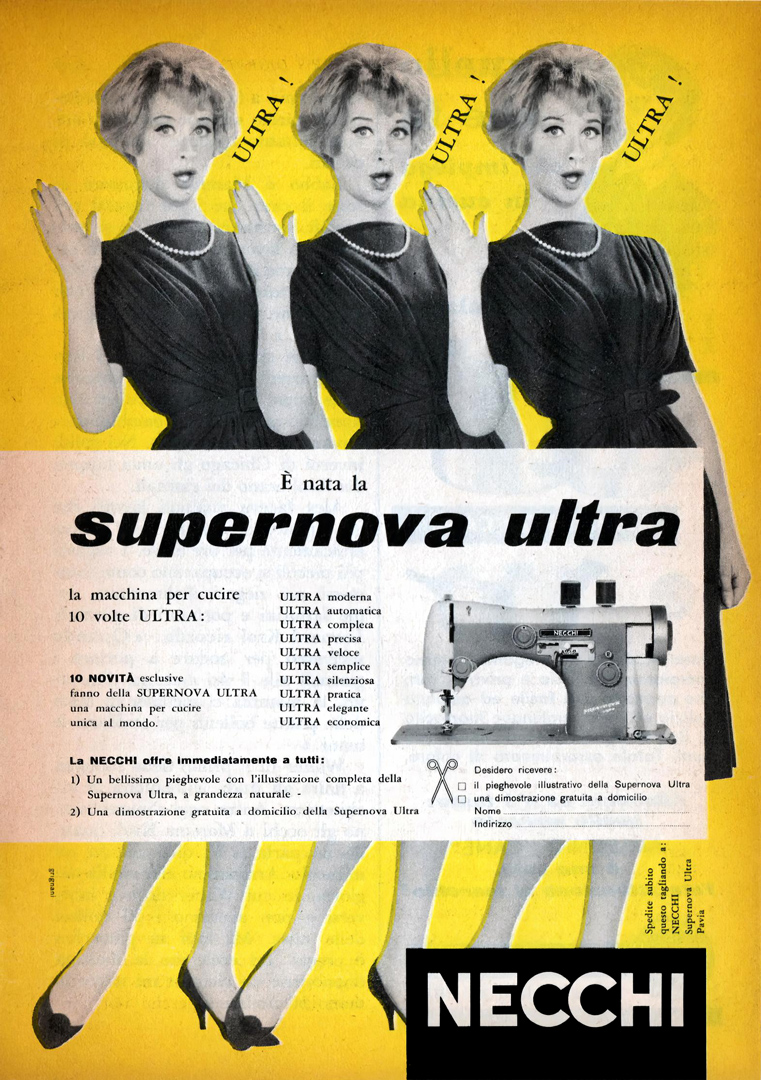
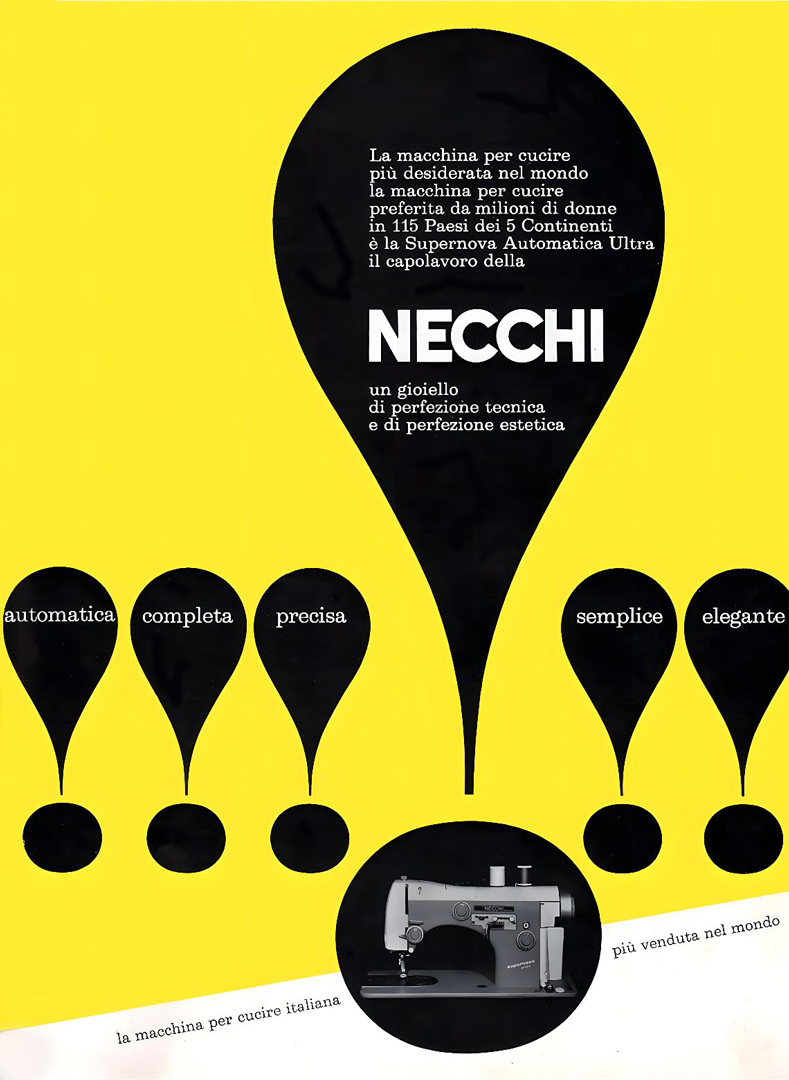
Simona de Iulio and Carlo Vinti have recently highlighted that upon examining the advertising messages crafted by graphic designers collaborating with in-house departments of large industries during the 1950s and 1960s, a common theme emerges: the product itself often took precedence. The creations of graphic designers tended to depict production rather than consumption and corporate attitudes more than consumer needs. However, in this specific case, the collaboration between Necchi’s advertising management and the esteemed contribution of Franco Grignani played a role in ‘correcting’ this trend.
In November of the same year, to underscore the recent significant acknowledgement, Franco and Jeanne Grignani jointly received – amid vivid cheers – the ‘Advertising Garter’ award (premio ‘Giarrettiera pubblicitaria‘), initiated in 1956 by the Italian Advertising Artists Association (AIAP). The award recognized “the exemplary contribution made to advertising graphics and the echo that his artistic activity has aroused also abroad”. The illustration of the award, signed by Pino Tovaglia, alluded to the mechanisms of a sewing machine, featuring a real red cotton thread winding between the signatures of members and admirers:
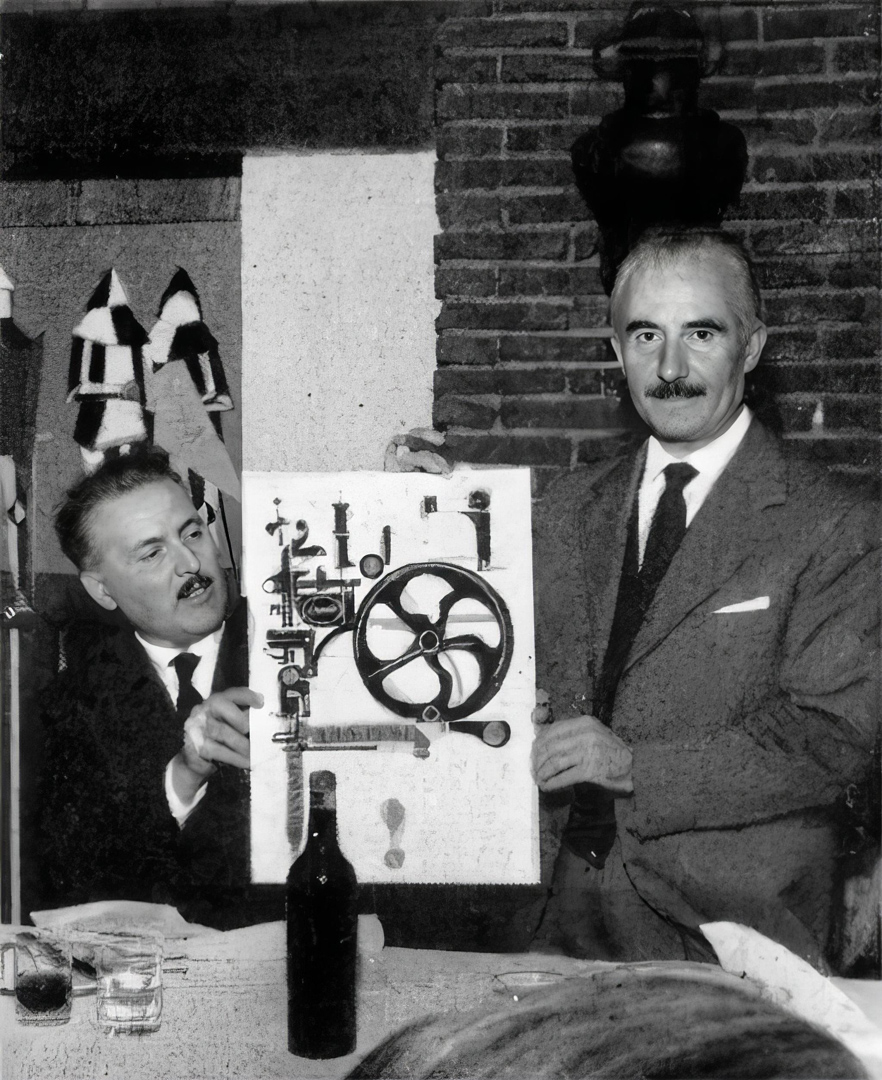
In this short ironic clip from 1962, Franco Grignani is humorously introduced as “the one who forces us to look at his posters”.
‘La Settimana Incom’ (Industria Corti Metraggi Milano) was an Italian newsreel distributed weekly in cinemas from 1946 to 1965.
[featured pic from AIGA Eye on Design, courtesy of Team EOD – from Pubblicità in Italia, 1959–60]
[*] courtesy of Daniela Grignani
[a] Italian Ways
[b] from the magazine ‘La Pubblicità’ issue n° 11, 1959
[7] AIAP / CDPG Centro di Documentazione sul Progetto Grafico, courtesy of Lorenzo Grazzani
[this post is not CC BY-NC 4.0 due to some adaptations from The Americanization of Italian Advertising during the 1950s and the 1960s]
[some infos also from ‘La Pubblicità’, n° 10 & 11, 1969]
[the Vittorio Necchi’s statement to Rai from the precious collaboration of Andrea Iucu – Necchi Pavia Italia]
Last Updated on 28/09/2024 by Emiliano
